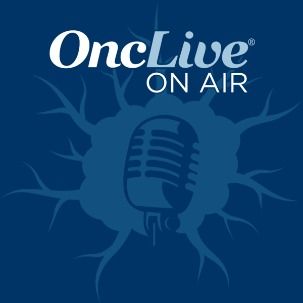Article
FDA Grants Emergency Use Authorization to Moderna COVID-19 Vaccine
Author(s):
December 18, 2020 - The FDA has granted Emergency Use Authorization to the second vaccine to prevent coronavirus disease 2019 infection.

The FDA has granted Emergency Use Authorization to the Moderna COVID-19 vaccine, the second vaccine to prevent coronavirus disease 2019 (COVID-19) infection for use in patients aged 18 years of age and older.
"With the availability of two vaccines now for the prevention of COVID-19, the FDA has taken another crucial step in the fight against this global pandemic that is causing vast numbers of hospitalizations and deaths in the United States each day,” FDA Commissioner Stephen M. Hahn, MD, stated in a press release. “Through the FDA’s open and transparent scientific review process, two COVID-19 vaccines have been authorized in an expedited timeframe while adhering to the rigorous standards for safety, effectiveness, and manufacturing quality needed to support emergency use authorization that the American people have come to expect from the FDA. These standards and our review process, which are the same we have used in reviewing the first COVID-19 vaccine and intend to use for any other COVID-19 vaccines, included input from independent scientific and public health experts as well as a thorough analysis of the data by the agency’s career staff.”
The authorization, which was granted to Moderna, follows the FDA’s Vaccines and Related Biological Products Advisory Committee meeting for the consideration of an Emergency Use Application of a COVID-19 vaccine candidate. The advisory committee had voted 20-0 with 1 abstention to support the benefit-risk profile associated with the vaccine.
The decision was based on safety and efficacy data yielded from a randomized, double-blinded, placebo-controlled, phase 3 trial that evaluated the vaccine in approximately 30,400 individuals. The primary efficacy objective of the trial was reduction in the incidence of COVID-19 in the 2-week period following the second dose of the vaccine in individuals who did not exhibit any evidence of SARS-CoV-2 infection prior to administration of the first dose.
At the time of the data cutoff, which was November 7, 2020, a total of 27,817 individuals were randomized 1:1 to receive either the vaccine or placebo. The median follow-up after having received the second dose was 7 weeks. These patients were included in the per-protocol efficacy analysis population of those who did not showcase any evidence of SARS-CoV-2 infection prior to immunization.
Results from the trial showed that a vaccine efficacy of 94.5% (95% CI, 86.5%-97.8%) in preventing confirmed COVID-19 infection occurring at least 2 weeks following the second vaccine dose. Here, 5 patients in the vaccine cohort had COVID-19 vs 90 patients in the placebo cohort.
Additional data from the final scheduled analysis of the primary efficacy end point of the trial revealed that at a data cutoff of November 21, 2020, and a median follow-up of over 2 months following the second vaccine dose, the vaccine efficacy was 94.1% (95% CI, 89.3%-96.8%). Eleven cases of COVID-19 were observed in the group who received the vaccine vs 185 cases in those who were given placebo.
Moreover, when stratified by age, the vaccine efficacy was 95.6% (95% CI, 90.6%-97.7%) in individuals who were aged 18 to 65 years; the efficacy rate was a bit lower in those over the age of 65 years, at 86.4% (95% CI, 61.4%-95.5%).
Results from the final secondary efficacy analysis also supported the effectiveness of the vaccine against severe COVID-19 infection as defined by the study protocol. Specifically, none of these cases were reported in the vaccine group vs 30 cases in the placebo group.
The most common solicited adverse effects observed with the vaccine included injection site pain (91.6%), fatigue (68.5%), headache (63.0%), muscle pain (59.6%), joint pain (44.8%), and chills (43.4%). Additionally, 0.2% to 9.7% of individuals experienced serious adverse effects (SAEs), and these were more commonly experienced following the second dose of the vaccine vs the first. These effects were also noted to be less common in those over 65 years of age vs younger individuals.
When considering mRNA vaccines in patients with cancer, Balazs Halmos, MD, a professor of medicine at Albert Einstein College of Medicine and director of the Thoracic Head and Neck Program at Montefiore Medical Center, told OncLive that this needs to be considered from 2 angles: safety and efficacy.
With regard to the efficacy component, Halmos noted: “Here, there will be particular patient subsets to worry about. While generally speaking patients with a variety of cancer diagnoses are able to mount a strong immune response to vaccines, immune suppression will diminish or eliminate vaccine responses.”
Halmos added, “The most significant concern will be amongst patients with a high degree of immune suppression such as post bone marrow transplant or receiving specific anti-B or T-cell directed therapies (eg anti-CD20) and we will certainly need to urgently set up proper studies for such patient cohorts as vaccination strategies might need to differ to achieve effective immunity.”
References
- FDA takes additional action in fight against COVID-19 by issuing emergency use authorization for second COVID-19 vaccine. News release. FDA. December 18, 2020. Accessed December 18, 2020. http://bit.ly/34IwcjR.
- Vaccines and Related Biological Products Advisory Committee Meeting: December 17, 2020. FDA. Accessed December 17, 2020. https://bit.ly/2WmSVx6.
Latest Conference Coverage

Perioperative Pembrolizumab Regimen Upholds Survival Benefit in Resectable NSCLC

Zongertinib Elicits Durable Responses in Pretreated Advanced HER2-Mutant NSCLC

Lenvatinib Shows Efficacy in Advanced HCC Post-Progression on Atezolizumab/Bevacizumab

Sacituzumab Govitecan Does Not Significantly Improve OS in Pretreated Urothelial Carcinoma
2 Commerce Drive
Cranbury, NJ 08512





